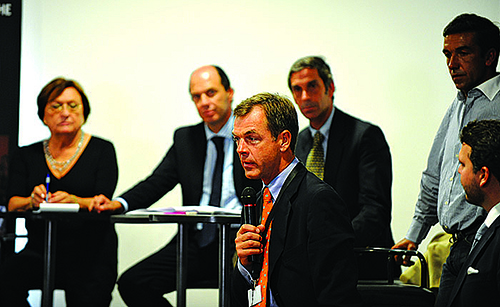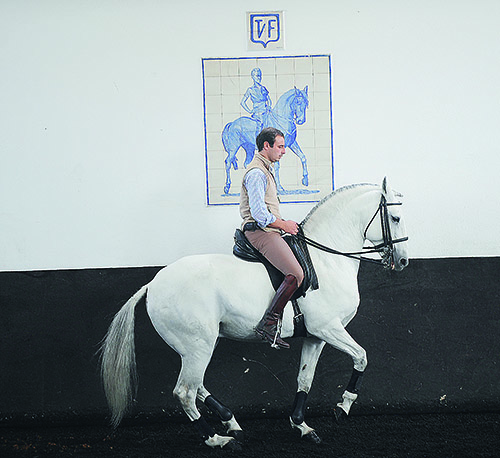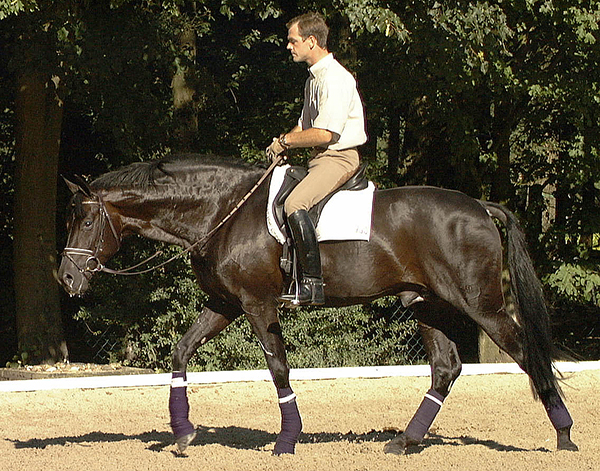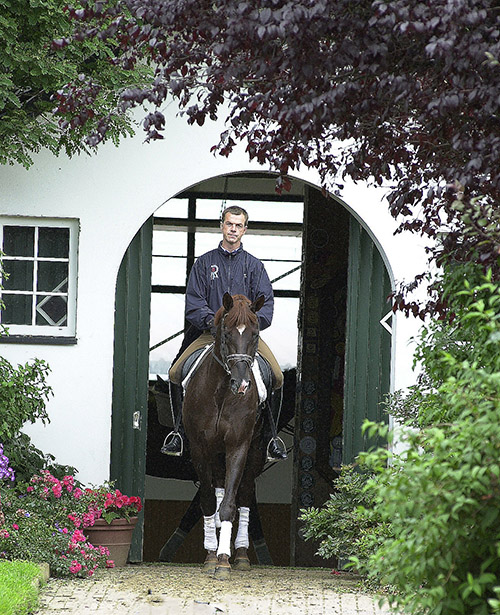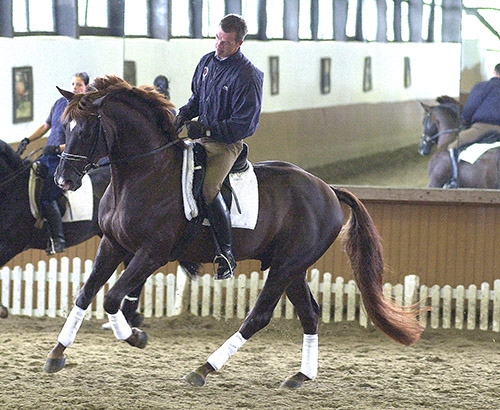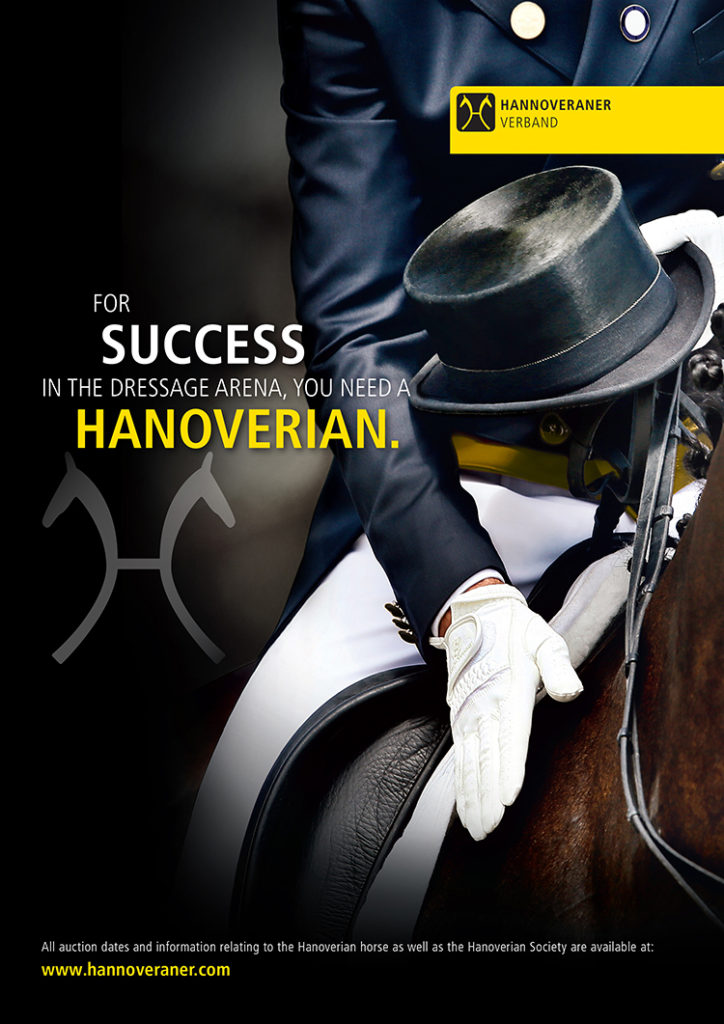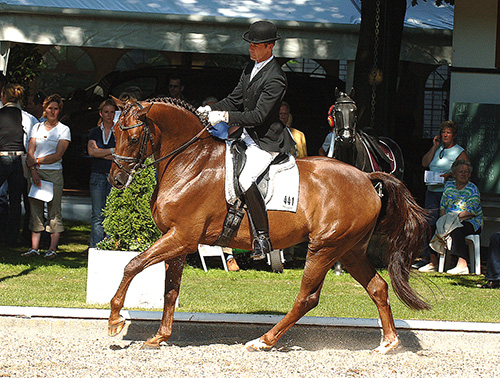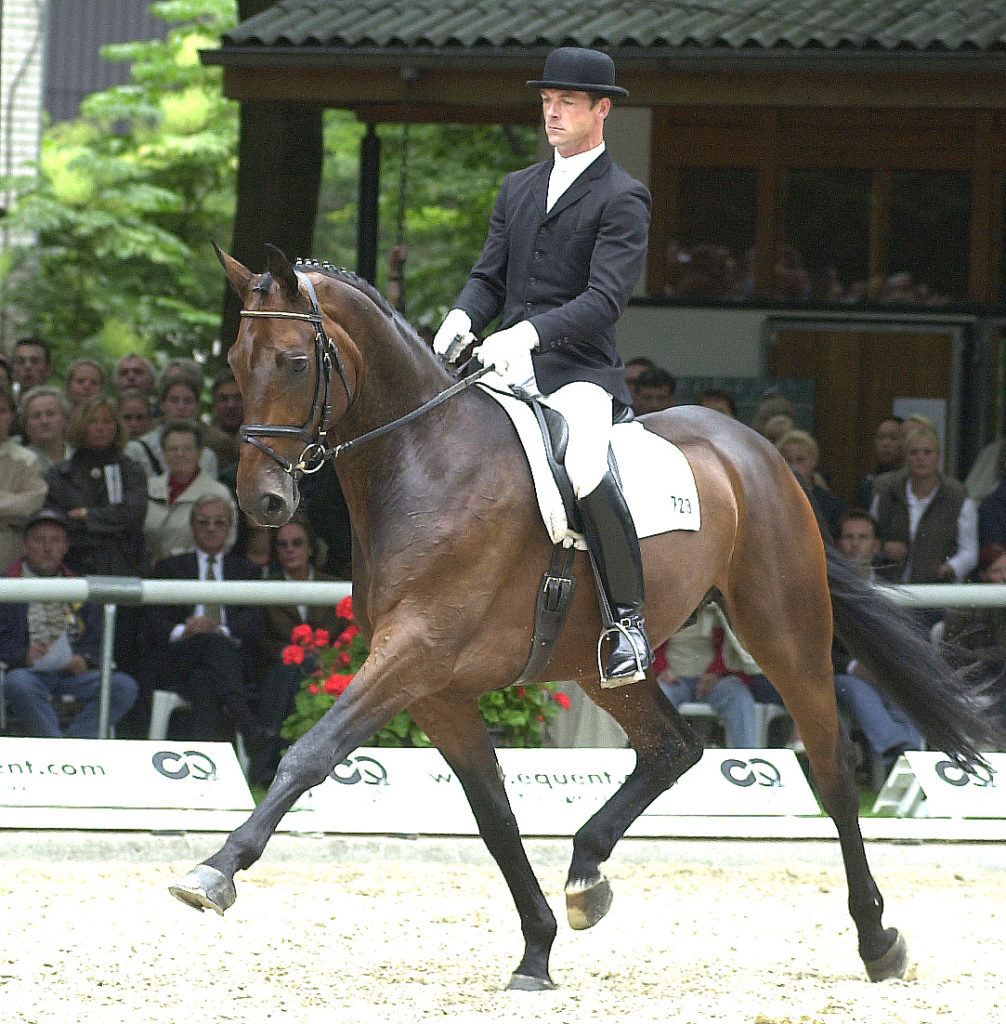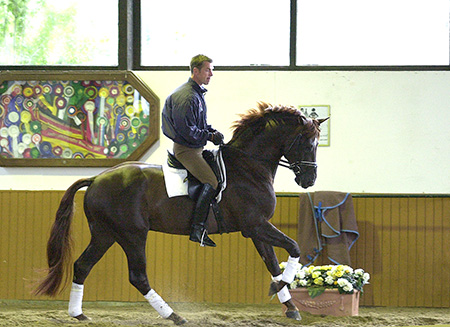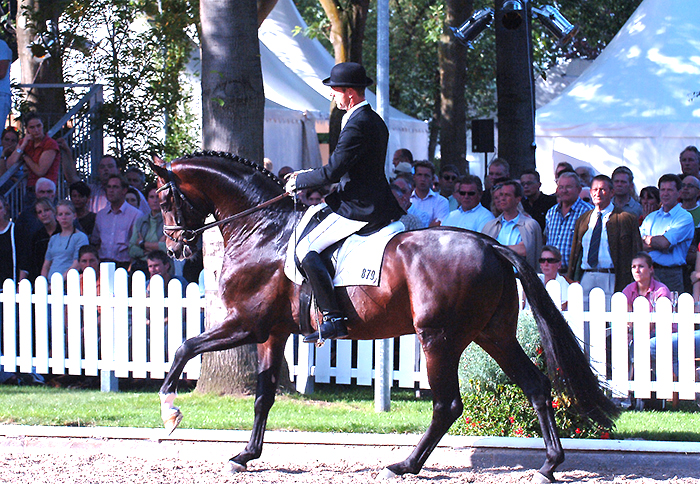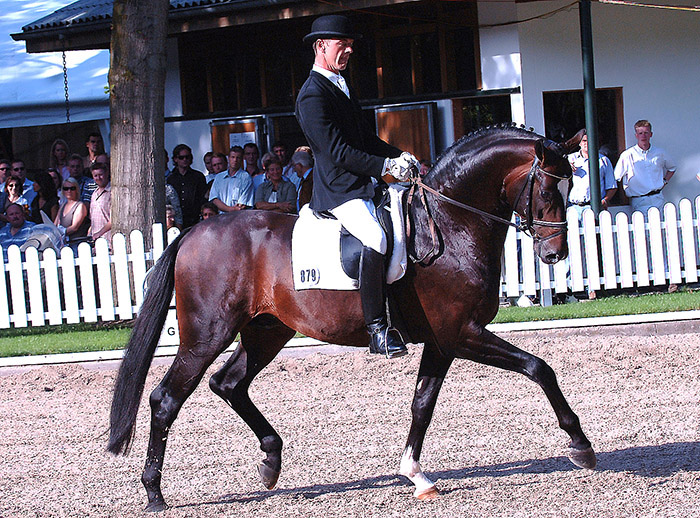“There are different ways of starting in young horses. Some people like to lunge them a lot, and get them balanced before they ride them, I prefer to break them in early and then put them back in the field and bring them back as four-year-olds in the autumn. I find they don’t forget anything.”
“When you are working with a horse, you have to find out what its talent is. Is it collection?
“The Lusitanos all have this.” – Rodrigo Torres, a member to the Portuguese team at the Tokyo Games demonstrates…
In Germany, we have many horses with nice gaits that are very good Medium or Prix St Georges horses, but if you try a little piaffe and it doesn’t work, then don’t keep trying. Keep their nice gaits for Prix St Georges, don’t keep trying piaffe, and ruin the walk and end up with nothing. Our job as young horse trainers is to find where the horse’s talent lies. They breed many horses a year in Hanover, and they don’t all need to go Grand Prix. In Germany, not that many people ride Grand Prix. In my opinion, a good horse is not necessarily a Grand Prix horse.”
Ulf and a young Sandro Hit
“One thing that is very important is the warm-up. We like to walk them to get their joints and cartilage warm, but if the horse comes out of the stable fresh, it makes no sense to press them to walk, and destroy the walk. Let them trot or canter and take the stable power out of the horse, then walk the horse for ten minutes. Then it is the horse that shows us what to do. I like to start with a little sitting trot, then you feel if the horse is level. Oh, my horse is okay, we can go on in rising trot.”
“When the horse is trotting in a good rhythm and is relaxed, try some steps sitting. Activate the horse by sitting on them and back to rising – it is like working with a rubber band, shorter and longer. Don’t let the horse get slower when you sit, stay in a forward direction. You don’t have to do anything, it is only the impulse of the sitting that brings the horse together and makes the rein lighter, then go rising, it is like a thank you. Always mix the work and make it interesting for the horse.”
“Remember to give the horse a rest in walk. The horse can only learn new things when he is fresh, that’s why you don’t start trying to teach new things after you have been riding the horse for 45 minutes.”
“Sometimes you have to change your schedule. You can warm up in canter – some horses are a bit stiff in the back and it is easier to keep your hands quiet and to sit on the horse in the jump of the canter, and that leads to a better connection. Once again in canter, play with the horse, bit of forward, bit of back, it makes the horse responsive to the aids. I am careful with my young horses not to let them get too slow, because that makes it harder for them to balance. What we want to do first is stay in correct rhythm – that is the first step of the training scale – and make the horse a little rounder in the neck.”
next Ulf discusses the aids
“We have three aids – leg, back and reins. Everything starts with the legs, then the back, then the reins. This doesn’t happen ten seconds apart, it is all one movement. The next thing to work on is the contact. The young horse can get a bit frightened and put its neck up and look around. When that happens, don’t be hard, just wait. If you frighten the horse, it will just go away from the rein.”
“You have to make sure that your young horse is really ready to go to a competition. Only go to the show when everything works at home. You need 100% at home because you will only get 80% at the competition. When you get to the show, the warm-up is not to make the horse tired and dead in the ring. When I am sitting at the judges’ table, if the horse is wet and looks as if it has been worked hard for 45 minutes, my marks are down a little. ”
“As riders we listen to the horse and aim to get the confidence of the horse. As riders, we are asked to make a decision every thirty seconds, and it is important to make the right decisions, then the horse gets confident and relaxed. If a young horse ridden in a double bridle, but that is not a problem, if the horse gets strong it is better that it is polite in a double than rude in a snaffle.”
“It is important in the walk to give the horse an opportunity to stretch. For a five-year-old horse, we only want to see medium walk. We train the horse in the moment of the transition to walk to stretch a little bit…”
“We want to see a nice active trot. We don’t want the feeling of two horses, one horse in front, another in the back, both parts don’t really fit together. We need to train the horse to use the back. When we make a transition to walk, we give a little, more frame, longer in the walk. All horses have a weak point and our job as riders is to improve that weak point. With some horses, in the walk you really have to train it, really allow the horse to stretch.”
“I’m talking about young horses, not Grand Prix horses – you train only the things you need, and for the young horse, you need a clear walk. It is important not to over-ride, let the horse find the rhythm and give a longer frame, then support more from behind. During the whole education of the horse, you have to keep the gaits clear. If you have a problem, then maybe you have asked too much and it is time to take a step backwards.”
“Let’s try to get more stretching by positioning the horse with some bending. Try a little bend to the side, then let him go forward. Never try to get the horse longer by going forward with your hands. Touch their mouth, then open and the horse follows – that might mean that for a short period of time, the neck gets shorter, but without contact you can never make the neck looser. The moment you touch the mouth, make sure the horse doesn’t get slower and come away from the bit. We want acceptance of the bit. When the engine from behind gets stuck at the poll, we have nothing, the movement must come over the back to the teeth of the horse.”
“Push, get the canter. Maybe in the beginning you over-do the aid, over time, it becomes less and less.”
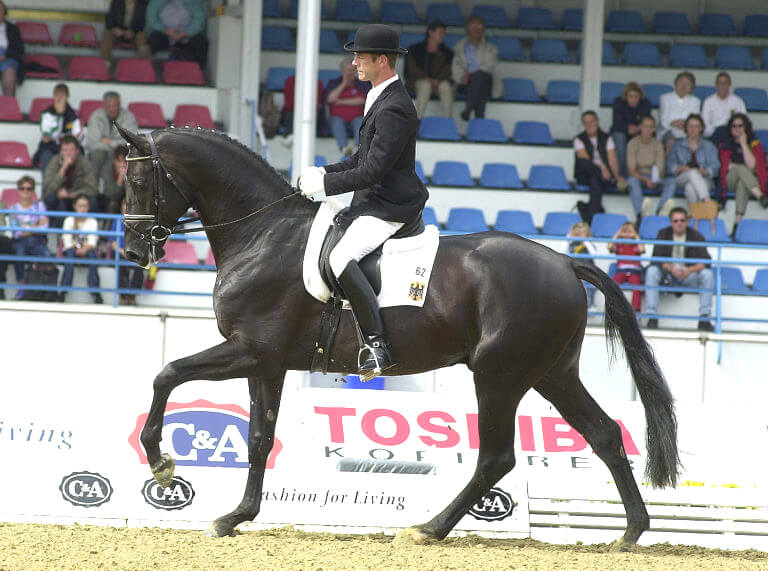
“If the horse has an expressive trot, it is often waiting all the time to stop. If the rider took away the legs it would stop. It needs more forwardness of its own. The horse tries too much to go collected and come behind the rider. The aim of young horse training is that if you ask the horse to stretch, it stretches immediately and does not lose balance or the clear rhythm. It is not easy to correct a four-beat canter, it is better to stop it happening.”
“The important thing to remember is that a good horse is not born, a good horse is made by the rider. The best horses in the world are the ones that found the rider with the right chemistry…”
Ulf said of the stallion: “You know I am a friend of Sandro Hit”.
Many stallions of Sandro Hit bloodlines are currently available in Australia from www.ihb.com.au

